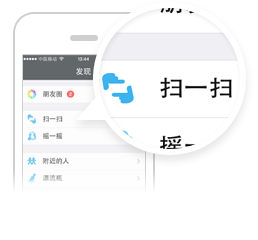一.获得控制台用户输入的信息
/** *//**获得控制台用户输入的信息
* @return
* @throws IOException
*/
public String getInputMessage() throws IOException...{
System.out.println("请输入您的命令∶");
byte buffer[]=new byte[1024];
int count=System.in.read(buffer);
char[] ch=new char[count-2];//最后两位为结束符,删去不要
for(int i=0;i
String str=new String(ch);
return str;
}
可以返回用户输入的信息,不足之处在于不支持中文输入,有待进一步改进。
二.复制文件
1.以文件流的方式复制文件
/** *//**以文件流的方式复制文件
* @param src 文件源目录
* @param dest 文件目的目录
* @throws IOException
*/
public void copyFile(String src,String dest) throws IOException...{
FileInputStream in=new FileInputStream(src);
File file=new File(dest);
if(!file.exists())
file.createNewFile();
FileOutputStream out=new FileOutputStream(file);
int c;
byte buffer[]=new byte[1024];
while((c=in.read(buffer))!=-1)...{
for(int i=0;i
}
in.close();
out.close();
}
该方法经过测试,支持中文处理,并且可以复制多种类型,比如txt,xml,jpg,doc等多种格式
三.写文件
1.利用PrintStream写文件
/** *//**
* 文件输出示例
*/
public void PrintStreamDemo()...{
try ...{
FileOutputStream out=new FileOutputStream("D:/test.txt");
PrintStream p=new PrintStream(out);
for(int i=0;i<10;i++)
p.println("This is "+i+" line");
} catch (FileNotFoundException e) ...{
e.printStackTrace();
}
}
2.利用StringBuffer写文件
public void StringBufferDemo() throws IOException......{
File file=new File("/root/sms.log");
if(!file.exists())
file.createNewFile();
FileOutputStream out=new FileOutputStream(file,true);
for(int i=0;i<10000;i++)......{
StringBuffer sb=new StringBuffer();
sb.append("这是第"+i+"行:前面介绍的各种方法都不关用,为什么总是奇怪的问题 ");
out.write(sb.toString().getBytes("utf-8"));
}
out.close();
}
该方法可以设定使用何种编码,有效解决中文问题。
四.文件重命名
/** *//**文件重命名
* @param path 文件目录
* @param oldname 原来的文件名
* @param newname 新文件名
*/
public void renameFile(String path,String oldname,String newname)...{
if(!oldname.equals(newname))...{//新的文件名和以前文件名不同时,才有必要进行重命名
File oldfile=new File(path+"/"+oldname);
File newfile=new File(path+"/"+newname);
if(newfile.exists())//若在该目录下已经有一个文件和新文件名相同,则不允许重命名
System.out.println(newname+"已经存在!");
else...{
oldfile.renameTo(newfile);
}
}
} 五.转移文件目录
转移文件目录不等同于复制文件,复制文件是复制后两个目录都存在该文件,而转移文件目录则是转移后,只有新目录中存在该文件。
/** *//**转移文件目录
* @param filename 文件名
* @param oldpath 旧目录
* @param newpath 新目录
* @param cover 若新目录下存在和转移文件具有相同文件名的文件时,是否覆盖新目录下文件,cover=true将会覆盖原文件,否则不操作
*/
public void changeDirectory(String filename,String oldpath,String newpath,boolean cover)...{
if(!oldpath.equals(newpath))...{
File oldfile=new File(oldpath+"/"+filename);
File newfile=new File(newpath+"/"+filename);
if(newfile.exists())...{//若在待转移目录下,已经存在待转移文件
if(cover)//覆盖
oldfile.renameTo(newfile);
else
System.out.println("在新目录下已经存在:"+filename);
}
else...{
oldfile.renameTo(newfile);
}
}
}
六.读文件
1.利用FileInputStream读取文件
/** *//**读文件
* @param path
* @return
* @throws IOException
*/
public String FileInputStreamDemo(String path) throws IOException...{
File file=new File(path);
if(!file.exists()||file.isDirectory())
throw new FileNotFoundException();
FileInputStream fis=new FileInputStream(file);
byte[] buf = new byte[1024];
StringBuffer sb=new StringBuffer();
while((fis.read(buf))!=-1)...{
sb.append(new String(buf));
buf=new byte[1024];//重新生成,避免和上次读取的数据重复
}
return sb.toString();
}
2.利用BufferedReader读取
在IO操作,利用BufferedReader和BufferedWriter效率会更高一点
/** *//**读文件
* @param path
* @return
* @throws IOException
*/
public String BufferedReaderDemo(String path) throws IOException...{
File file=new File(path);
if(!file.exists()||file.isDirectory())
throw new FileNotFoundException();
BufferedReader br=new BufferedReader(new FileReader(file));
String temp=null;
StringBuffer sb=new StringBuffer();
temp=br.readLine();
while(temp!=null)...{
sb.append(temp+" ");
temp=br.readLine();
}
return sb.toString();
}
3.利用dom4j读取xml文件
/** *//**从目录中读取xml文件
* @param path 文件目录
* @return
* @throws DocumentException
* @throws IOException
*/
public Document readXml(String path) throws DocumentException, IOException...{
File file=new File(path);
BufferedReader bufferedreader = new BufferedReader(new FileReader(file));
SAXReader saxreader = new SAXReader();
Document document = (Document)saxreader.read(bufferedreader);
bufferedreader.close();
return document;
}
七.创建文件(文件夹)
1.创建文件夹 /** *//**创建文件夹
* @param path 目录
*/
public void createDir(String path)...{
File dir=new File(path);
if(!dir.exists())
dir.mkdir();
}
2.创建新文件 /** *//**创建新文件
* @param path 目录
* @param filename 文件名
* @throws IOException
*/
public void createFile(String path,String filename) throws IOException...{
File file=new File(path+"/"+filename);
if(!file.exists())
file.createNewFile();
}
八.删除文件(目录)
1.删除文件 /** *//**删除文件
* @param path 目录
* @param filename 文件名
*/
public void delFile(String path,String filename)...{
File file=new File(path+"/"+filename);
if(file.exists()&&file.isFile())
file.delete();
}
2.删除目录
要利用File类的delete()方法删除目录时,必须保证该目录下没有文件或者子目录,否则删除失败,因此在实际应用中,我们要删除目录,必须利用递归删除该目录下的所有子目录和文件,然后再删除该目录。 /** *//**递归删除文件夹
* @param path
*/
public void delDir(String path)...{
File dir=new File(path);
if(dir.exists())...{
File[] tmp=dir.listFiles();
for(int i=0;i
delDir(path+"/"+tmp[i].getName());
}
else...{
tmp[i].delete();
}
}
dir.delete();
}
}







 计算
计算 安全
安全 数据库
数据库 网络和加速
网络和加速 企业服务
企业服务

